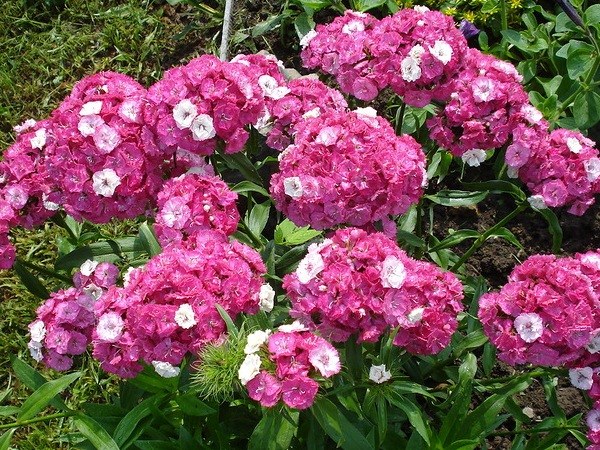You will need
- - sprouts cloves
- - grunt
- - pot
- - open ground
- - water
- - fertilizer
- - support
Instruction
1
Transplanting rooted shoots in the pot. When breeding any of the varieties of carnation cuttings or cuttings should be planted in pots. Prepare the right soil composition. Mix two parts sod land, one part leaf and one part sand. After germination, cuttings it's time again to replant the cloves.
2
Transplanting the sprouted cuttings and strains. Usually the growth of cuttings going late winter, followed by the need for them to pick up the new composition of the soil. For such purposes the composition is chosen from two parts sod land, one part leaf and one part humus. Don't forget to add some sand.
3
Preparation place. Regardless of the goal of the transplant in the pot or to another flower bed, be sure to immaculately prepare the site for replanting. In the garden or in a pot, dig a proper pit, which will be home to the seedlings of clove. If it's a bed, then place the sprouts cloves at a distance approximately equal to twenty centimeters. The size of pits should be such that it easily became a clod of earth with roots. The roots must not be rumpled.
4
Watering. At a sufficiently hot and dry weather pits carefully pour the water. Water generously after transplanting the plants themselves. This is required to make the roots not showered the earth, then carnation is better accustomed. The first time, monitor closely, to the earth at the roots does not dry up, but excessive moisture should not be allowed. Water regularly and in small doses.
5
Feeding. Carnation responds well to fertilizers. Feeding guide two weeks after transplanting the plants. For carnation good rotted organic or mineral fertilizers.
6
Support stems. When transplanting flowering stems carnations, and a well-grown cuttings, there is a possibility of their lodging. In order to prevent this, organize support stems. After the transplant, tie up them or lean to the support.
Note
There are many varieties of carnations. Some are annuals, transplanting these types of cloves is only possible if your plans include the expansion of the flower bed, and because you carry the flowers to the place next door. If your goal is the continued reproduction of the clove, and you is deposited sprouts in boxes, you should take the perennial varieties, which remain after flowering.
Useful advice
To achieve the best growth of clove after planting, do not apply it too much. Cloves the root collar must be on the surface of the soil about the same level. If to deepen the neck, then the plant is difficult to obtain the necessary substances from the air. In another case, there will be a lack of reception of nutrients from the land.
